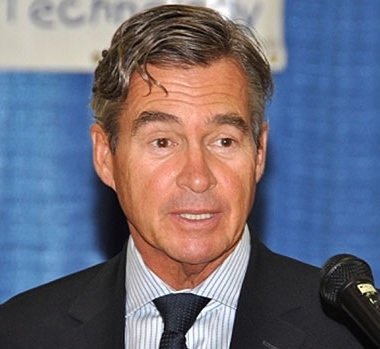Understanding history requires a long view, and the picture that is emerging from the Reform Party upheaval, which began with that party’s formation by Preston Manning almost 30 years ago, is of a movement that has failed in its fundamental goals of eliminating the Liberal Party of Canada and replacing it with a U.S.-style two-party system that would push Canadian political discourse ever further to the right.
Manning founded the Reform Party in the fall of 1987, and it has been with us ever since — although it was later known as the Canadian Alliance and, after its reverse hostile takeover of the Progressive Conservative Party of Canada in 2003, as the Conservative Party of Canada.
That final name change signalled the direction its creators hoped to take Canadian conservatism — away from any suggestion of progressiveness, in the ordinary centrist political meaning of that term.
In that they have largely succeeded. There are virtually no progressive conservatives left now in the party’s ranks.
The latest barometric reading of the state of Canadian conservatism is the report Tuesday that veteran Alberta Conservative politician Lee Richardson is seriously considering running in former prime minister Stephen Harper’s Calgary Heritage riding…as a Liberal.
Richardson has been around in Conservative circles for what seems like forever. As a young man, he served John Diefenbaker as executive assistant in Ottawa and Peter Lougheed as chief of staff in Edmonton. He was first elected to Parliament as the Progressive Conservative MP for Calgary Southeast in 1988 — a year after Manning turned the switch to deliver the first electrical charge to the bolts on the Reform Party’s neck. He was defeated in the 1993 election by Reform’s Jan Brown.
In 2004, however, Richardson returned to federal politics, winning election as a CPC MP in Calgary Centre, where he was re-elected in 2008 and 2011. He resigned from Parliament in 2012, saying in his farewell speech that “we are all Canadians and we all love our country. We would all…do well to remember that and leave the partisan furies at the water’s edge.”
Well, good luck with that! He was another Red Tory pushed aside in the Stephen Harper imperium, which was the flowering of the movement started by Manning.
Richardson didn’t exactly quit politics in 2012, though. He resigned from Parliament to take up duties as then PC premier Alison Redford’s principal secretary. Alas for him, and for the provincial PC dynasty, the bloom was soon off that particular wild rose, and when Redford was forced by her own party to resign in March 2014, Richardson departed the scene as well.
In 2015, he sought the federal Conservative nomination in Calgary Rocky Ridge, but, having successfully skidded him, there was no way Harper’s party, dominated by the ideology of market fundamentalism, was going to readmit an old progressive to its cadres. He failed to get the nomination, no doubt to Harper’s satisfaction.
Now he has advised the media he will seek the Liberal nomination in Harper’s riding — which, if he gets it and manages to win the by-election there too, would deliver a fitting riposte to the former PM.
Richardson told a Toronto Star reporter he understands he’ll be leaving old Conservative friends behind by trying this. “I may lose some friends on the Reform Party side, I doubt I would lose friends on the Progressive Conservative side.”
But he’s willing to make the effort because he believes Albertans deserve more representation in Ottawa, he said to the Calgary Herald‘s political columnist, Don Braid. “We do need to have Alberta’s voice heard, and constantly, in the federal caucus. That would be my role.”
What Richardson didn’t quite say was the profound political truth that dares not speak its name: that the only way for Albertans to do that in the foreseeable future is by electing Liberals, who appear to be Canada’s natural governing party once again because the Conservatives, having all but purged their centrist elements, have become too extreme for most Canadian voters.
The Conservative Party — long pushed to the right by ideologues like Manning and Harper, and lovin’ it — can’t easily change back to what it once was. Pragmatic people on the centre right just aren’t welcome there any more and are unlikely ever to be welcome.
Although it can take credit for Canada’s dark decade under Harper, this is the most significant achievement of the Reform Revolution three decades after it started and, in the long run, it will finish the job of returning the CPC to a far-right rump based in a few rural corners of Western Canada — little more than Social Credit on steroids.
This should serve as a warning to Alberta provincial conservatives pondering a Manning-style takeover and merger of their two parties as the only way to defeat the NDP — although it’s unlikely it will do so.
None of this, of course, guarantees Richardson will win in Calgary Heritage — either the Liberal nomination or the by-election, whenever it takes place.
But the very fact he is prepared to contemplate such a move after such a long and successful career in Tory ranks should tell you which way this wind is blowing.
This post also appears on David Climenhaga’s blog, AlbertaPolitics.ca.
Like this article? Please chip in to keep stories like these coming.
Image: Wikimedia Commons



